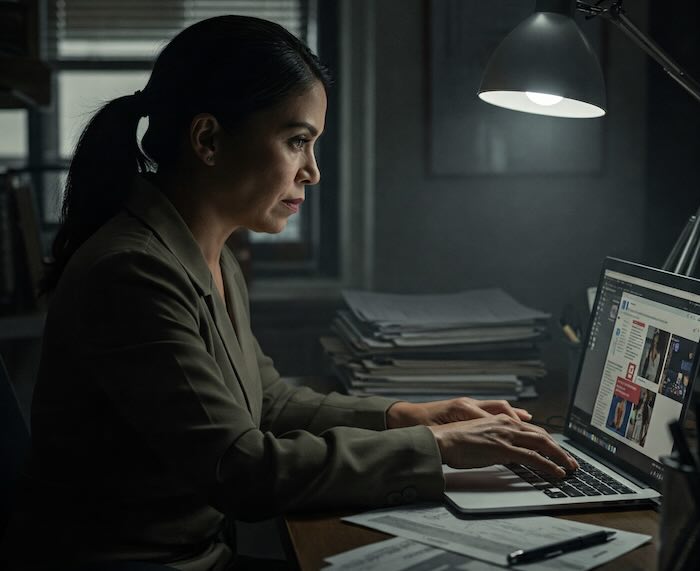 Reporting on corruption involves risk. Here we look at how investigative journalists stay safe when covering stories that are likely to anger those who are determined to keep their secrets hidden.
Reporting on corruption involves risk. Here we look at how investigative journalists stay safe when covering stories that are likely to anger those who are determined to keep their secrets hidden.
Exposing corruption and malpractice is essential for public interest reporting, but when the corruption involves state actors or powerful institutions, it can carry serious risks.
Media Helping Media received a request from a journalist who was writing a piece exposing malpractice and lawbreaking on an international scale. The issue was how to cover the story in a way that has most impact but also protects the journalist from harm.
So we looked at how investigative journalists who have contributed training articles to Media Helping Media in the past stay safe when reporting in the public interest.
Here are some suggestions for writing and reporting responsibly, while keeping a low personal profile.
1. Focus on the evidence, not emotion
Your strongest shield is verifiable, well-documented evidence. Avoid emotional language or personal commentary that could be perceived as provocation.
Let the facts speak for themselves. The clearer and more objective your evidence, the harder it is to dismiss or attack you as biased or inflammatory.
Tip: Use neutral phrasing such as “documents reviewed by [your outlet] indicate…” or “sources familiar with the matter confirm…” rather than accusatory statements.
2. Share the burden — collaborate
Whenever possible, work with established, reputable media organisations or cross-border journalism networks.
Collaborating distributes the risk and makes it harder for authorities to single out any one reporter.
International partnerships can amplify your story and increase protection through visibility.
Tip: Consider platforms such as the Organized Crime and Corruption Reporting Project (OCCRP), Forbidden Stories, or the International Consortium of Investigative Journalists (ICIJ).
3. Avoid personalisation
Steer clear of framing the story as a personal crusade. Avoid first-person narratives that place you at the center of the investigation.
This keeps the focus on the issue and not on you as the messenger, reducing the chance of retaliation becoming personal.
Example: Instead of “I discovered a network of bribery schemes,” write “Investigations uncovered a network of bribery schemes.”
4. Attribute and distance
Attribute findings to documents, data, or multiple independent sources wherever possible. This helps to create a layer of separation between you and the claims being made.
Use phrases such as “according to court records,” or “based on financial disclosures.”
Benefit: This makes clear that you are conveying findings, not making personal allegations.
5. Avoid premature exposure
Before publishing sensitive stories, ensure that legal advice has been sought and digital security protocols are in place.
Avoid promoting your investigation on social media or in casual professional conversations until the reporting is solid, complete, and ready for coordinated release.
Tip: Don’t leak information about what you are doing or tease the audience via social media. It could alert those you are investigating and prompt them to try to stop you.
6. Prioritise digital and physical security
Use encrypted communications with sources and colleagues. Be mindful of metadata in documents and photos you publish.
Consider personal safety measures such as varying routines and having contingency plans in place if the story attracts unwanted attention.
Tip: Tools such as Signal for messaging, ProtonMail for email, and secured document-sharing platforms can help protect your communication.
7. Use protective editorial framing
Frame your story in terms of its public interest value.
Emphasise the impact on ordinary citizens, the economy, or public trust, rather than framing it purely as a scandal or exposé.
This can make it harder for governments to claim you are acting out of hostility or partisanship.
Example: “The findings raise serious questions about public accountability and the management of taxpayer funds.”
8. Know the legal landscape
Familiarise yourself with defamation, sedition, and national security laws in your jurisdiction and in the jurisdictions of your publishing partners.
Work with media lawyers to review drafts of your reporting.
Checklist: Reporting corruption
- Build your case with verifiable, clear evidence.
- Collaborate with trusted media networks for strength in numbers.
- Avoid making the story about you personally.
- Attribute findings to documents and multiple sources.
- Secure legal advice before publishing sensitive material.
- Use encrypted communication tools and secure data handling.
- Frame your reporting around public interest and accountability.
- Understand the legal risks and plan accordingly.
- Plan for personal safety: vary routines, have contingency plans.
- Avoid pre-publication exposure: stay discreet until release.
Conclusion
Courageous reporting changes the world, but it should never come at the cost of your safety.
Beyond the crucial measures for physical and digital security, reporting on corruption carries significant personal and emotional burdens.
The stress and potential for intimidation can take a toll on a journalist’s psychological well-being, requiring support and stress management.
The risks often extend to the reporter’s family and loved ones, underscoring the importance of considering their safety and involving them in relevant security planning.
To navigate these challenges and mitigate long-term repercussions, journalists should be aware of the support networks available. Organisations such as …
- The Committee to Protect Journalists (CPJ),
- Reporters Without Borders (RSF),
- The International Federation of Journalists (IFJ),
- The Rory Peck Trust,
- The International Women’s Media Foundation (IWMF),
- Free Press Unlimited
… offer assistance ranging from legal aid and safety training to emergency financial support and psychosocial care. Engaging with these resources and developing a plan for responding to potential threats and harassment are important considerations.
In conclusion
Ensure you have a network of trusted colleagues and legal experts to help make sure the facts you uncover sees the light of day safely.
Your best strategy is to produce impartial, accurate and fair fact-based journalism that keeps the focus on the evidence and the public good, while minimising personal exposure.








